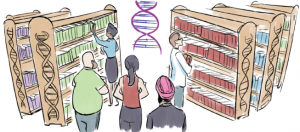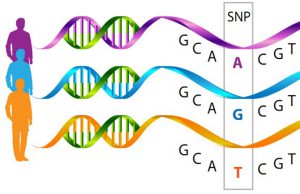After a short break (most of the team have been off enjoying their summer holidays!) the A-Z blog is back! Since we are just over halfway through the A-Z series, Tom [EDIT Lab PhD student] has put together a quiz based on all our previous posts for you to test how much you’ve learnt so far!
Below is a multiple choice question for each of the posts published in the A-Z series so far (A-P). See how many you can get right without going back to look! Write down your answers to check them at the bottom of the page when you finish.
A for Anxiety
Which sub-type of anxiety disorder has the highest lifetime prevalence (8-13%)?
1 – Panic disorder
2 – Social anxiety disorder
3 – Specific phobias
B for Biobank
The UK Biobank follows the health and well-being of approximately _____ people:
1 – 500,000
2 – 50,000
3 – 5,000
C for Cognitive Behavioural Therapy (CBT)
CBT leads to remission in (at least) what percentage of affected individuals?
1 – 20%
2 – 50%
3 – 70%
D for Depression
Which of the following is one of the core symptoms of depression?
1 – Loss of pleasure/interest
2 – Insomnia
3 – Low self-esteem
E for Eating Disorders
What is the name of the UK’s leading eating disorder charity?
1 – Oxfam
2 – Beat
3 – Feet
F for Fear
There are 3 behavioural responses associated with fear: fight, flight, and. . . ?
1 – Fun
2 – Freeze
3 – Fix
G for Gene-Environment Correlation
Which of the 3 main types of gene-environment correlation tend to occur later in life?
1 – Evocative gene-environment correlations
2 – Passive gene-environment correlations
3 – Active gene-environment correlations
H is for Heritability
On average, what percentage of genetic information is shared by dizygotic twins?
1 – 0%
2 – 50%
3 – 100%
I is for Individual Differences
Which of the following is NOT a type of statistical analysis commonly used for individual differences research?
1 – Regression
2 – Correlation
3 – T-test
J for Jobs in Academia
What is something that a role in academia can provide?
1 – Flexibility and travel opportunities
2 – A fast track to a massive pension
3 – Undemanding work
K is for Kinship
What percentage of genetic variance does a grandparent share with their grandchild?
1 – 25%
2 – 50%
3 – 100%
L for Loneliness
How is loneliness related to social isolation?
1 – Loneliness is the subjective perception of social isolation.
2 – Loneliness is the negative influence of social isolation on mental health.
3 – Loneliness is not related to social isolation.
M for Missing Heritability
What does the term ‘missing heritability’ refer to?
1 – Heritability that cannot be measured using genome-wide association studies.
2 – When a member of a twin pair cannot be tracked down.
3 – The difference between heritability estimates from genome-wide association studies and twin studies.
N for Neuroticism
What percentage of variation in neuroticism is said to be influenced by genetic differences?
1 – 30-40%
2 – 40-60%
3 – 10-15%
O for Open Science
What is often the part of science that is communicated the slowest?
1 – Hypotheses
2 – Data
3 – Interpretations
P is for Polygenic Risk Scores
What percentage of the sample variance in educational attainment could be explained by a recent polygenic score constructed from a GWAS of more than 1 million individuals?
1 – 5%
2 – 9%
3 – 11%
Scroll down to see the answers below…
| A – 3 | I – 3 |
| B – 1 | J – 1 |
| C – 2 | K – 1 |
| D – 1 | L – 1 |
| E – 2 | M – 3 |
| F – 2 | N – 2 |
| G – 3 | O – 2 |
| H – 2 | P – 3 |




